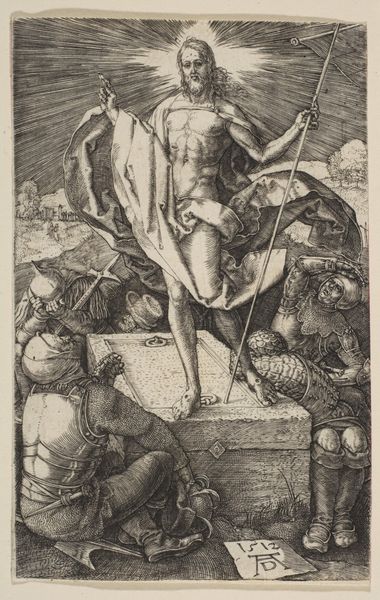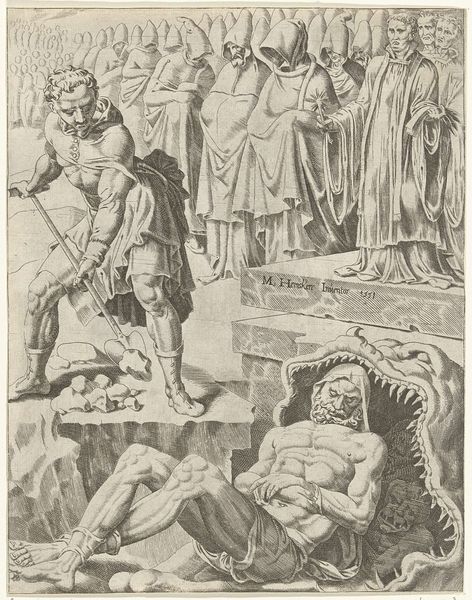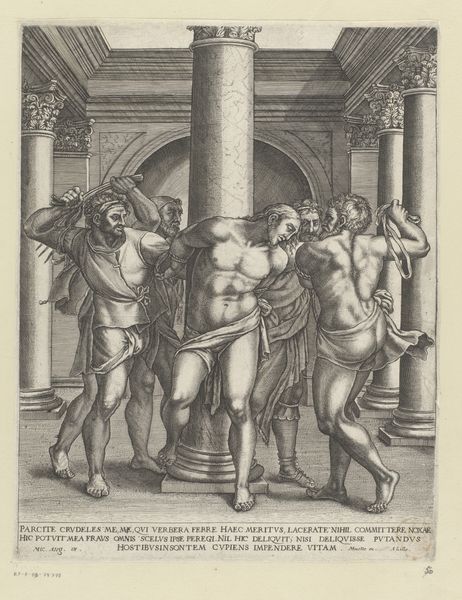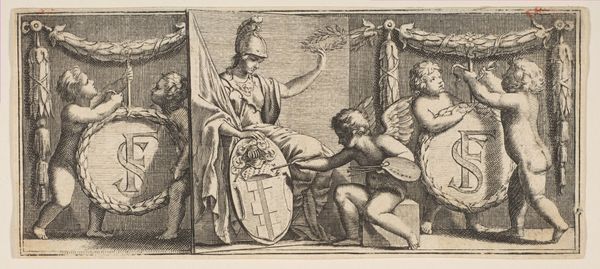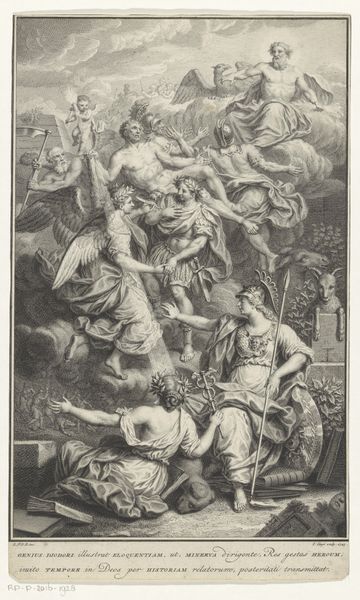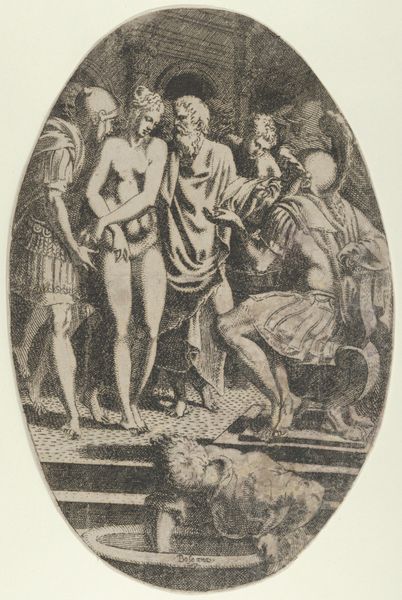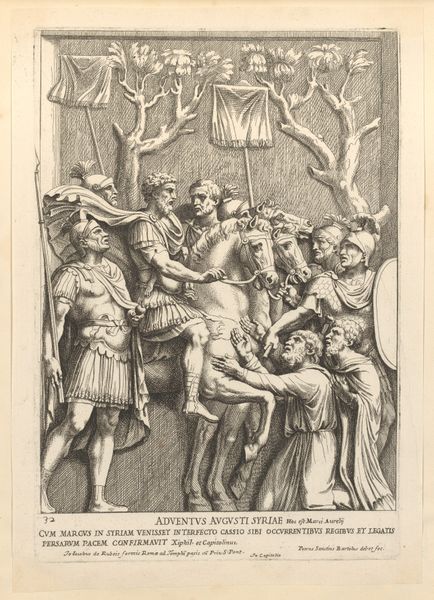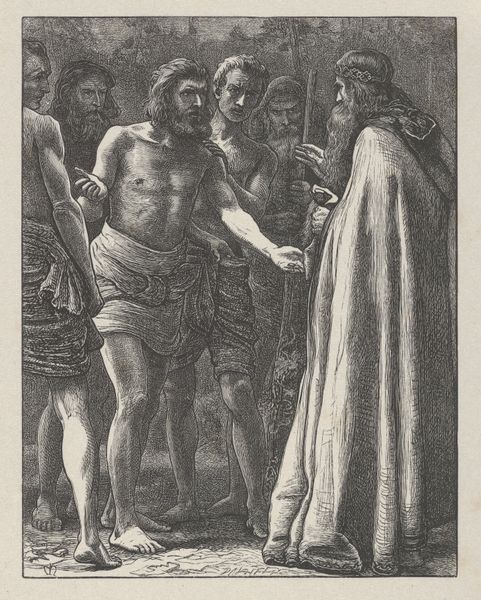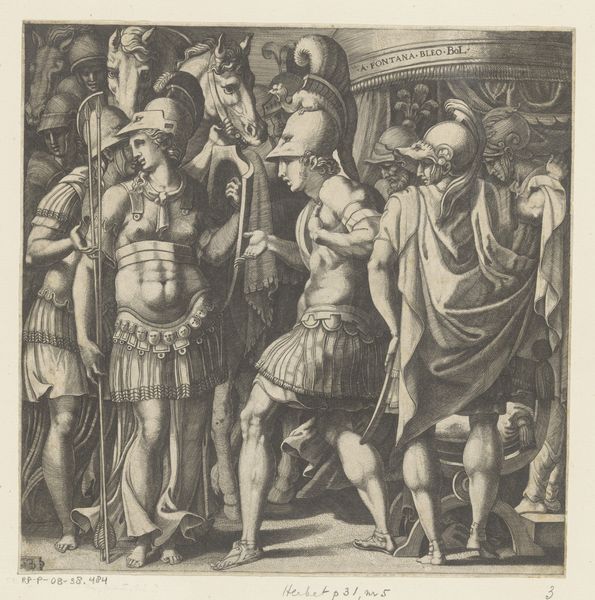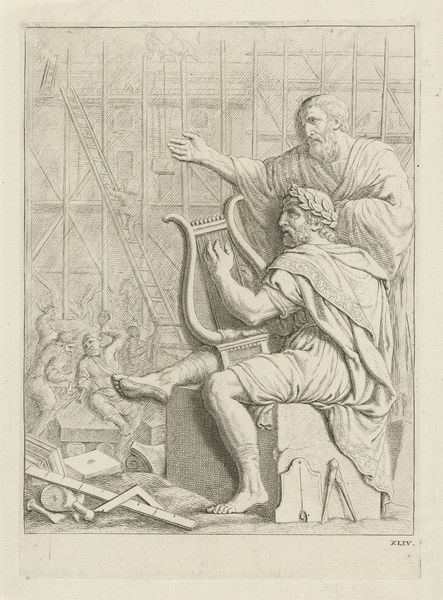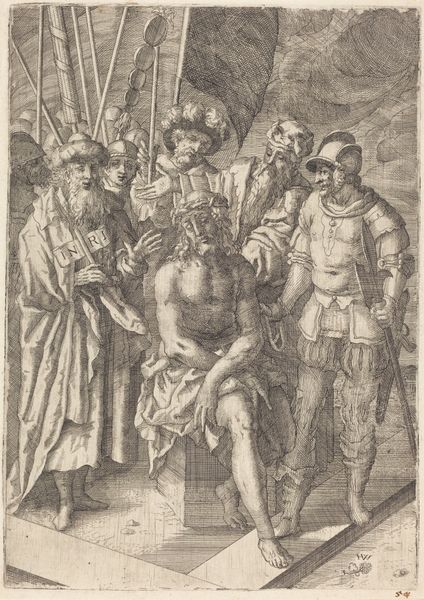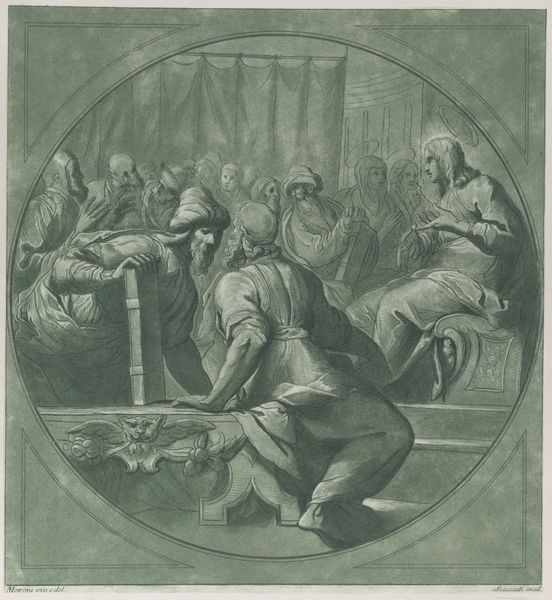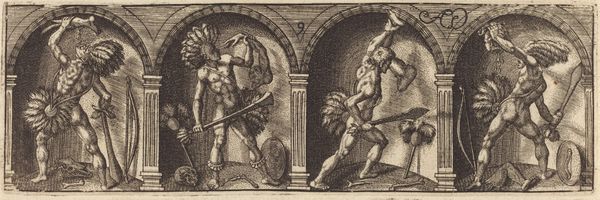
drawing, print, intaglio, engraving
#
drawing
#
allegory
# print
#
intaglio
#
classical-realism
#
figuration
#
history-painting
#
academic-art
#
nude
#
engraving
Dimensions: Plate: 10 5/16 × 7 5/16 in. (26.2 × 18.6 cm) Sheet: 10 7/16 × 7 3/8 in. (26.5 × 18.8 cm)
Copyright: Public Domain
Curator: This intaglio print, “Four Classical Figures (pagan sacrifice),” was crafted by Wenceslaus Hollar in 1638. It is currently held in the collection of the Metropolitan Museum of Art. Editor: There’s something undeniably austere about the composition. It's dominated by classical figures frozen in action, which gives the print a rather somber feeling. It definitely echoes the formality and seriousness that define depictions of pagan sacrifice in Renaissance art. Curator: Indeed. Hollar positions this work within a longer historical narrative, reinterpreting an image that had its origins with Mantegna and subsequently developed during the Renaissance. The ritual is what calls out to me – a representation of the social order where sacrifice reaffirms established power dynamics and also inscribes an almost timeless hierarchy. We're seeing the nude, muscular bodies and their vulnerability in service of… something. Editor: The bodies themselves – strong, yes, but also yielding, presented for our gaze. And those accoutrements of power and ritual. Did you notice the helmets with plumes, spears, shields, snake motifs? To my eyes they serve as both signifiers of authority, as well as protection. In one instance the head of Medusa also makes an appearance, reminding viewers about potential dangers and the need for defenses, especially when approaching such an old belief system that once dictated their lives. Curator: Absolutely. We're witnessing a power play that goes beyond just physical strength. It's embedded in symbols and the narratives they perpetuate. This "pagan sacrifice" reflects anxieties of religious and social hierarchies, even in 17th-century England. How were societal rules, faith, and even individual liberties being negotiated? Editor: Hollar definitely wants us to dwell on what’s being venerated and the forces at play. It really shows us the powerful and ever-present hold those old systems had on a society on the cusp of tremendous shifts. Curator: Exactly, and that connection is still resonant for us today. I think it allows for a broader contemplation of the undercurrents of sacrifice that operate, even now, in various forms in society. Editor: Agreed. Thanks, Wenceslaus Hollar. This small but striking scene, opens the door to a richer consideration of continuity, legacy and what lasts.
Comments
No comments
Be the first to comment and join the conversation on the ultimate creative platform.
